Urgent Care Patient Satisfaction Benchmark Report
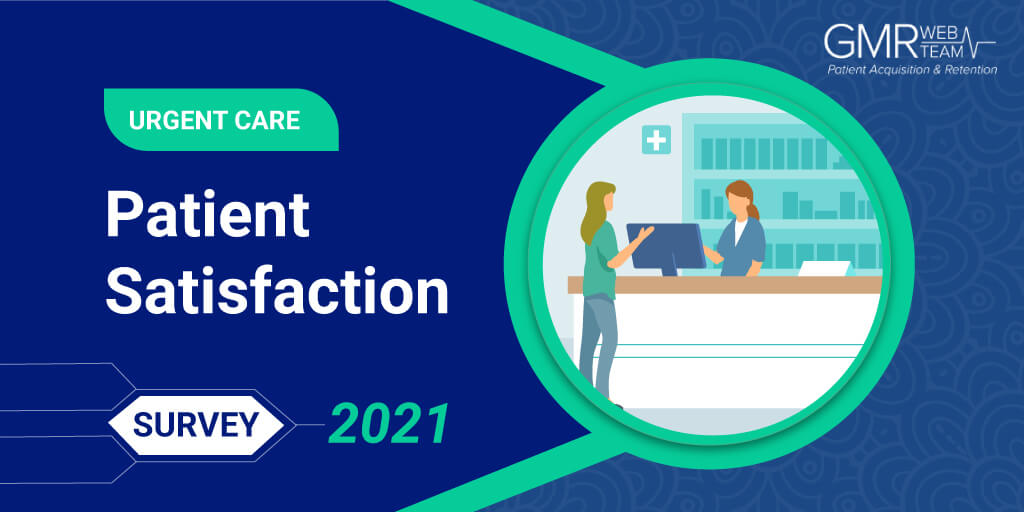
Two or more consecutive patient visits equated to multiple positive ratings for urgent care centers in 2021.
Key Takeaways
- 91.5 % of patients who visited their urgent care providers more than once in 2021 gave multiple positive ratings, indicating higher patient satisfaction.
- Timely address of negative responses can help urgent care centers retain more than 40% of their existing patients, thus, expanding their loyal patient base.
- Overall, the Net Promoter Score (a measure of patient loyalty) for urgent care centers in 2021 was 76.5 /100 (Total Sample = 17756), whereas it was 77.30 /100 in 2020.
- 83.5 % of the patients are Promoters (patients who are likely to refer a specific practice/doctor to a friend or family member), down by 0.3% compared to 2020.
- 9.5 % of the patients are Passives (patients who are likely not to take any action in referring to a specific practice/doctor), whereas it was 9.8% in 2020.
- 7.0% of the patients are Detractors (patients who are likely to deter people from choosing a specific practice/doctor), whereas it was 6.4 % in 2020.
- Excellence, Pleasant, and Friendly were the dominant words used by patients who rated their experience as positive.
Welcome to the GMR Web Team Urgent Care Patient Satisfaction Survey (2021)
Since the inception of our first patient satisfaction survey report (January-December 2017), we have seen some changes in the ways patients review their healthcare visit experience, but mostly in how we analyze it. This survey follows on from our first report, comparing the useful insights on reviews and patient satisfaction. The data was taken from our proprietary software RepuGen.
This survey measures the LOYALTY of patients for their urgent care and helps in understanding the needs of the patients for developing effective patient-related programs to address their pain points. This will help in developing a stronger bond between the patients and the urgent care facility, and the patients will become the advocate of the urgent care center, resulting in more referrals and fueling growth.
How Do Patients Rate Their Visit to the Urgent Care Center Office Based on Their RepuScore*?
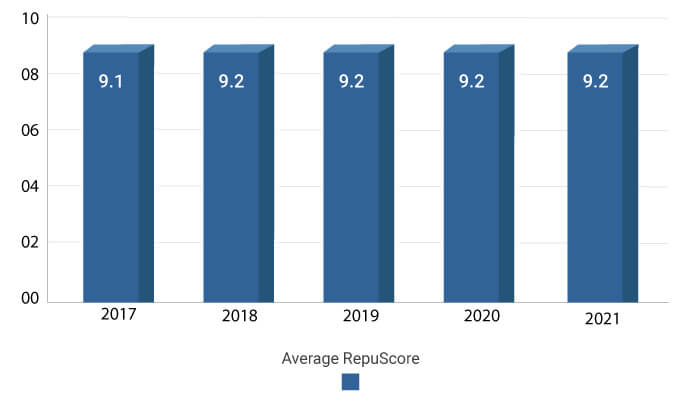
*RepuScore is the score given by patients on a scale of 0 to 10 when asked about their likelihood of recommending the urgent care center based on their experience of the last visit. 0 means will not recommend, and 10 means will recommend.
Key Findings
- The Average RepuScore in 2021 has remained at a constant 9.2 since 2018.
Analysis
- Since the urgent care centers in this analysis were using GMR Web Team tools to tackle their patients’ concerns, it is very likely that the possibility of recommending the urgent care centers remained constant from 2018 to 2021.
- This finding substantiates our view that the key to getting more recommendations from patients is focusing more on maintaining a positive and satisfying patient experience at urgent care centers.
All Ratings (Rating Breakdown)
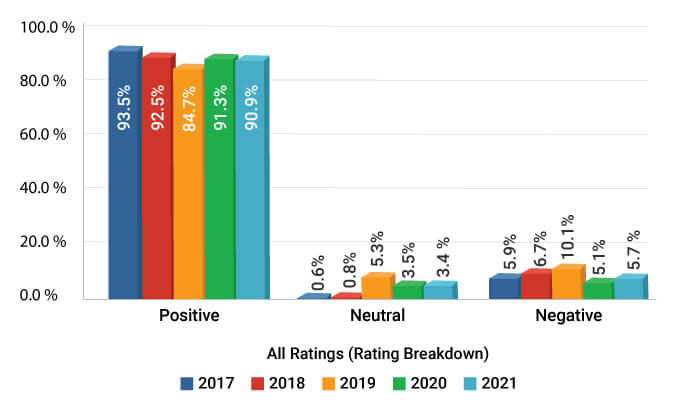
Key Findings
- Patients rating their experience positive slightly decreased from 91.3% in 2020 to 90.9% in 2021.
- The slight decrease in positive ratings was accompanied by a relatively greater increase in negative ratings by 0.6%
Analysis
- The slight decline in positive rating can be attributed to things getting back to normal post-pandemic. The year 2020 saw increased responsiveness in urgent care centers in providing a more patient enriching experience amidst COVID-19, In 2021, though the providers worked towards ensuring a positive and fruitful patient experience, the high expectations of the patients (as reflected by the often expressed negative sentiment 'mediocrity') might have been misaligned with the actual services provided by the urgent care centers.
- To identify areas that need improvement and ensure a better experience for patients visiting their clinic, urgent care centers need to compare their individual scores with the overall numbers.
All Ratings Breakdown for Multiple Visits
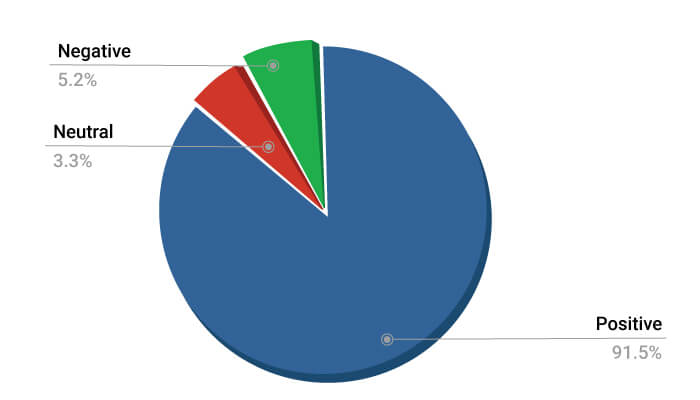
Key Findings
- After multiple visits, 91.5% of patients gave their urgent care providers positive ratings more than once. On the other hand, 5.2% and 3.3% of patients gave negative and neutral ratings to their providers, respectively
Analysis
- The frequency of patient visits was directly proportional to the number of positive ratings received by urgent care centers. Patients who visited their urgent care providers more than once gave multiple positive ratings to their providers. This indicates that with every consecutive visit, the urgent care provider successfully provided a more enriching patient experience, rightly identifying patient concerns and addressing them on time.
- By enhancing overall patient experience and maintaining patient satisfaction levels in terms of their healthcare needs, expected staff behavior, average wait time, and clinic environment, providers can encourage their patients to give more frequent positive reviews.
Net Promoter Score Breakdown
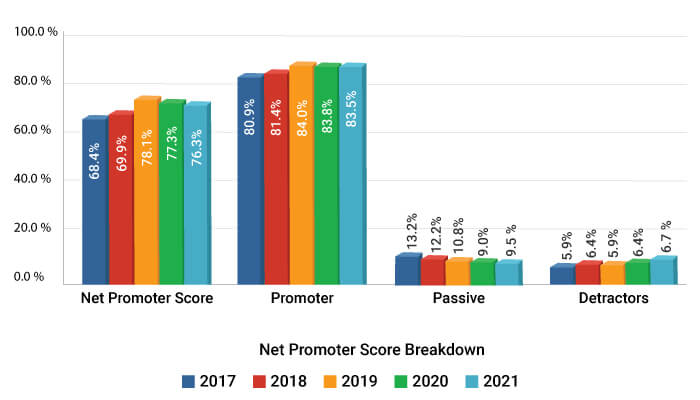
**The Net Promoter Score is an index ranging from -100 to 100 that measures the willingness of customers to recommend a company's products or services to others. It is used as a proxy for gauging the customer's overall satisfaction with a company's product or service and the customer's loyalty to the brand.
Key Findings
- The Net Promoter Score experienced a slight drop of 0.80% from 77.30% in 2020 to 76.50% in 2021.
- The number of detractors reached an all-time high in 5 years, with 7% of patients not likely to recommend their urgent care center in 2021.
Analysis
- The constantly rising number of detractors coupled with a decline in promoters indicate that more patients are driving prospective patients away.
- Patient referrals are crucial to any clinic’s business and image. Therefore, urgent care providers need to look at their individual scores and compare them with the average number to identify their strengths (areas where they are performing well) and weaknesses (areas that need improvement).
- They also need to actively address patient concerns and resolve them quickly to prevent a further rise in detractors.
- Patient Sentiment Analysis *** after their visit:
*** Patients are asked to explain their reason for rating their visit the way they did. GMR Web Team analyzes sentiments and their intensity based on the comments using an artificial intelligence tool. This gives a better perspective on whether a patient has a positive or a negative sentiment/ opinion towards their providers, as a rating of 10 could still be a so-so experience for a patient.
Patient Sentiment Trends
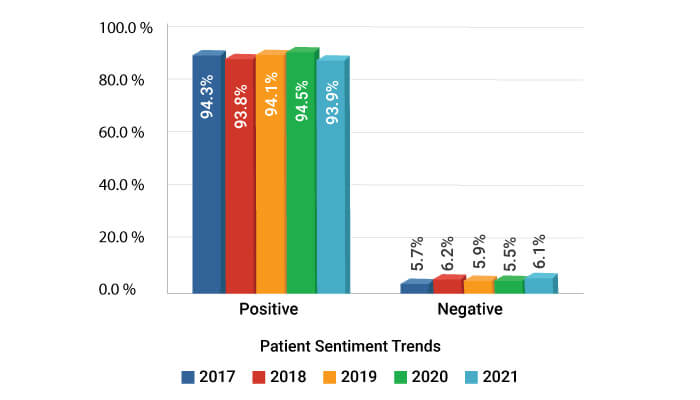
Key Findings:
- Positive sentiment saw a slight decline of 0.6% in 2021 as compared to 2020, with an equal increase in negative sentiment, which rose from 5.5% in 2020 to 6.1% in 2021.
Analysis:
- The pandemic had a major role to play in higher positive patient sentiment in 2020. The increased public awareness, greater health consciousness, and gratitude towards urgent care service providers were a few factors that triggered the increase. Meanwhile, the urgent care centers were also more diligent in providing prompt and effective services during COVID-19. Now with things getting ‘back to normal,’ patients have higher expectations of their healthcare providers than before.
- To enhance the overall patient experience, urgent care providers should consider switching to in-home services instead of requiring physical visits to emergency departments. Providing digital conveniences such as online payment options, easy access to health records, and quick estimation of wait times are other ways to encourage positive patient sentiment.
- These results vary significantly from the RepuScore because these scores are based on artificial intelligence to scan ACTUAL patient comments instead of their 0-10 ratings.
- Ratings are not always the most efficient method to measure a comment because the most common ratings are a 10 or 0. However, most people who give such drastic scores are not always equally happy or dissatisfied.
- The context of the patients’ comments needs to be measured. This is expertly done by this AI sentiment analysis tool with an error margin of about 3%.
- This also illustrates that online review scores may not always accurately portray reputation due to the skewed nature of the ratings.
- Note that a negative sentiment is not equivalent to an unsatisfied patient. While assessing the overall comment, an AI sentiment analysis tool could comprehend a positive rating as negative for a remark like ‘extended wait times.’
Patient Service Recovery
| Year |
Negative Response |
Completed |
Average Response Days |
| 2020 |
726 |
397 |
3 day(s) |
| 2021 |
1015 |
408 |
4 day(s) |
*Our proprietary software not only notifies urgent care providers of their patients’ sentiments but also helps them identify unsatisfied patients and quickly resolve their concern, thus allowing them to
- maintain patient satisfaction level
- retain patients they were about to lose
Key Findings:
The patient service recovery feature enabled urgent care providers to resolve more than 40% of negative responses on time, thereby retaining most of the unhappy patients.
Analysis:
- Patient service recovery is crucial to retaining and growing any healthcare practice. By streamlining the recovery process and ensuring prompt redressal of patient grievances, urgent care centers can build a stellar online reputation and gain more referrals.
- Tracking negative feedback, identifying the root concern, and addressing it on time will encourage greater patient loyalty, converting them into promoters.
Entities and Attributes That Highlight Patients’ Sentiments
**** Our AI tool has analyzed the positive and negative entities based on the frequency of the words mentioned below (attributes) used in the comments made by patients.
Key Findings:
- From a sample size of 6200 comments, 95.3% responded with positive sentiments, while 4.7% displayed a negative response.
- The highest-ranked positive sentiments expressed by patients were Excellence (20.0%), Pleasant (16.1%), and Friendly (8.4%).
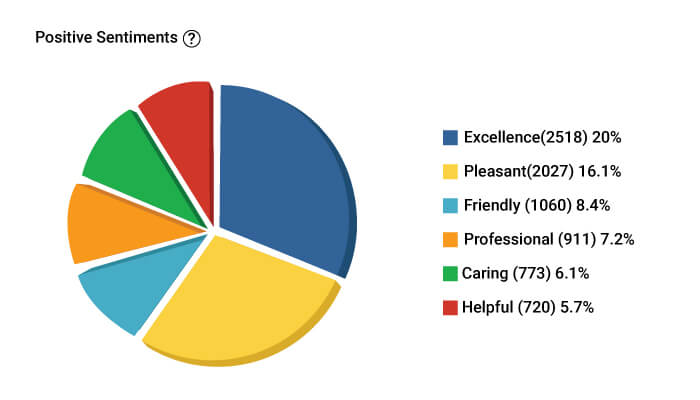
- Mediocrity (33.5%), Unpleasant (33.5%), and Rude (21.2%) were reported among the highest-ranked negative sentiments expressed by patients.
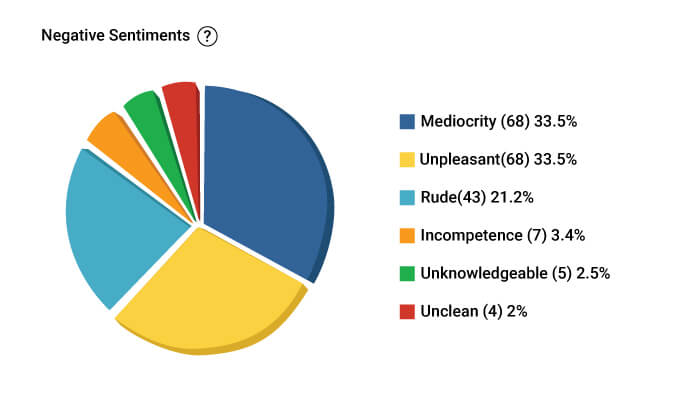
Analysis:
- Besides the highest-ranked positive sentiments, patients also responded with positive attributes like professional, caring, and helpful for their urgent care providers. Urgent Care providers should note their positive features and develop their practice based on these attributes to ensure better patient satisfaction.
- Other than the top three negative attributes, patients also reported negative sentiments, such as incompetence, unknowledgeable and unclean. These negative sentiments pinpoint the areas that need immediate redressal and improvement by urgent care clinics to retain their patients and sustain better satisfaction levels.
- Note that a negative sentiment does not always indicate an unsatisfied patient. If the complete text of a comment is considered, an AI sentiment analysis tool might regard a positive ranking as negative or unsatisfactory for something as simple as 'the wait time was too long.'
About the GMR Web Team Urgent Care Patient Satisfaction Survey
- An online survey was conducted from January 2021 through December 2021 among 17756 patients belonging to urgent care centers that are using GMR Web Team service. We then compared the findings with 2020, 2019, and 2018. We included the data of 2017 to show the actual trends over the years.
- The patients were asked to select their likelihood of recommending the urgent care center based on their latest experience on a scale of 0 to 10.
- Patients were asked to explain the reason behind their rating.
- All the information (rating score and comments) was detached from patient and doctor identification to make the report HIPAA* compliant. GMR Web Team cannot backtrack comments or sentiments to link Net Promoter Score or sentiments to patients or urgent care centers that were used for this report.
*HIPAA - The Health Insurance Portability and Accountability Act, a US law designed to provide privacy standards to protect patients' medical records and other health information provided to health plans, doctors, hospitals, and other health care providers.
- Patients were then classified into three categories – Promoters, Passives, and Detractors.
- Promoters: Patients giving a rating of either 9 or 10 to their urgent care center were classified as Promoters. They are loyal enthusiasts who will keep referring the urgent care centers to other patients.
- Passives: Patients giving a rating of 7 or 8 to their urgent care center were classified as Passive. They are satisfied but NOT enthusiastic patients who are vulnerable to competitive offerings.
- Detractors: Patients giving a rating of 0 to 6 to their urgent care center were classified as Detractors. They are unhappy patients who can damage the reputation of their urgent care center and impede growth through negative word of mouth.
- All comments were grouped by positive and negative ratings.
- An established 3rd party artificial intelligence tool RepuGen, was used to gauge patient sentiment by group (positive and negative) and also to gauge the intensity of the sentiment based on their comments about their experience.
- GMR Web Team proprietary software was used to analyze the word density of comments by group for all patients to identify words used by patients to describe their experience.
Why Is the Urgent Care Patient Satisfaction Benchmark Report So Important?
Online reviews and recommendations from existing patients are the best source of new patients for urgent care centers.
- In-depth analyses of patient experience help urgent care centers identify their strengths and weaknesses, empowering them to make positive organizational changes.
- Understanding the patient sentiment and its intensity provides insight into the patients’ mindsets after they leave the office. Urgent care centers can use the information to improve satisfaction and brand their practice consistent with the positive sentiments generated by their service.
- The density of words extracted from patients’ comments of different groups will help better communicate the desired branding effort.
Suggested Next Steps:
Urgent care centers should gather patient experience information to better understand the patient sentiment and ultimately improve patient care and satisfaction.
Patient satisfaction data can also be used to attract more patients by:
- Improving online reputation by requesting happy patients to share their information on the internet. Over 80% of prospective patients consider online reviews as the first step to choosing their doctors.
- Developing an automated referral program that requests happy patients to recommend their urgent care center to others.
Contact us at 800-523-7187 or fill out our form to learn how you can start building your patient satisfaction data and how to use it to generate more patients.








